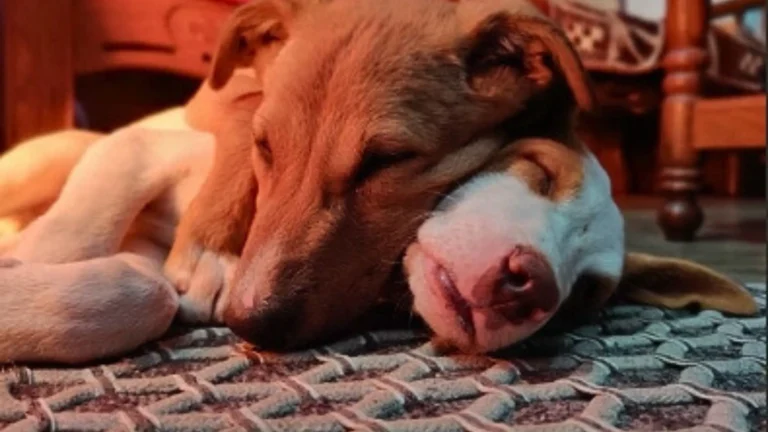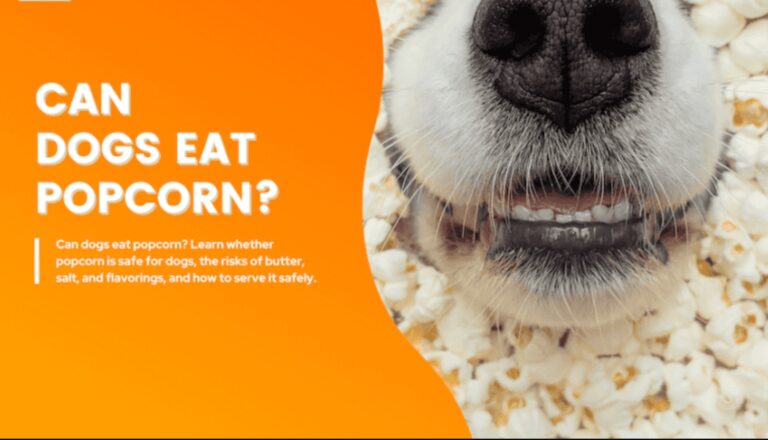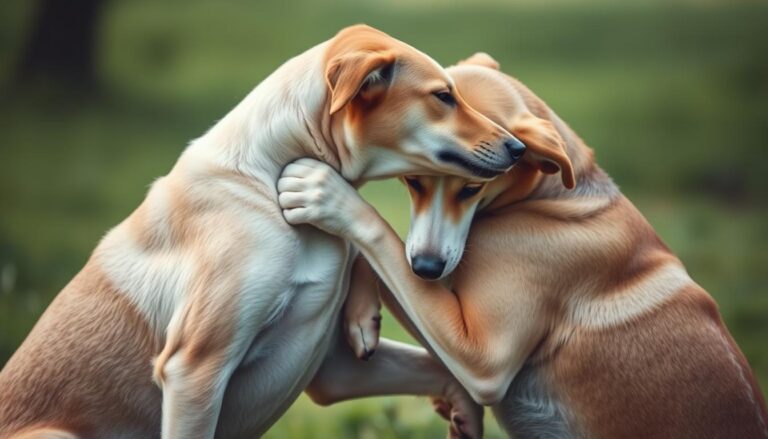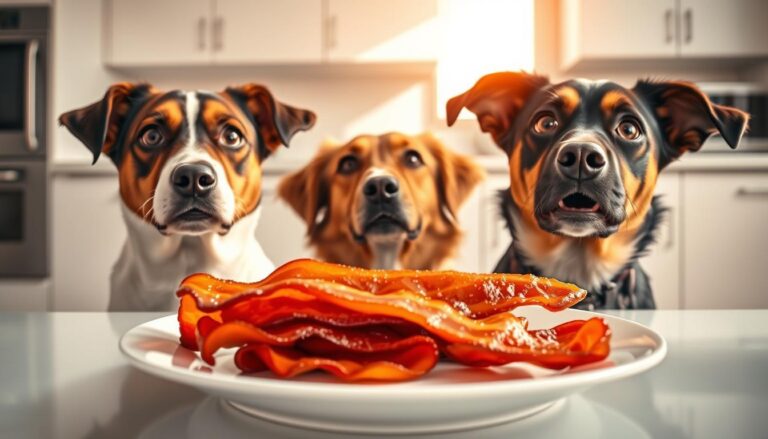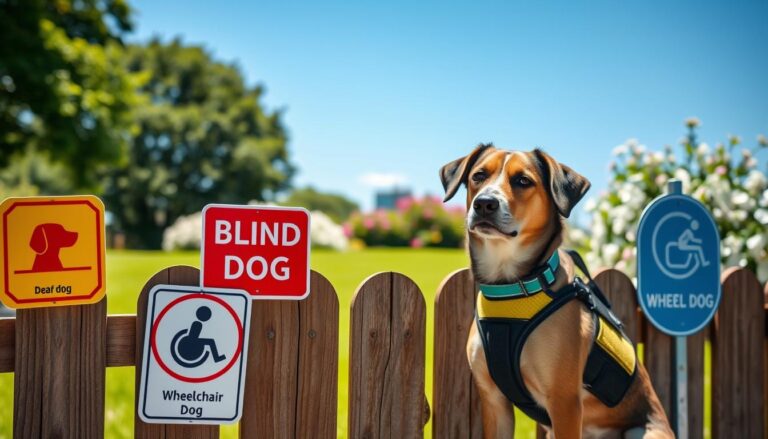Discover the Most Adorable Fluffy Dog Breeds Today
Table of Contents
Every dog lover knows that magical moment when a fluffy puppy melts your heart. Their softness is irresistible. Fluffy dog breeds aren’t just pets—they’re walking bundles of joy waiting to be your best friend.
From the tiniest Pomeranian to the majestic Samoyed, these furry friends bring warmth and comfort. Whether you want a small cuddle buddy or a large soft companion, there’s something for everyone. Their diverse personalities and stunning coats make them more than pets—they’re family members with incredible charm.
Exploring fluffy dog breeds, you’ll find a wide range of options. Some have luxurious coats for cold climates, while others are hypoallergenic for sensitive owners. Your perfect fluffy companion is waiting to change your life with love and softness.
Understanding Fluffy Dog Breeds
Fluffy dogs win our hearts with their soft, luxurious coats and cute looks. If you’re searching for hypoallergenic pups or cuddly lap dogs, knowing about fluffy breeds is key. It helps you find the perfect pet.
What Makes a Dog Breed Fluffy
Fluffy dogs have special coats. They usually have a double-layered coat. This includes:
- A soft, dense undercoat for warmth
- A longer, softer outer coat for the fluffy look
Not all fluffy dogs are the same. Some, like Poodles, are hypoallergenic. This makes them great for people with allergies.
Benefits of Owning a Fluffy Dog
Fluffy dogs are more than cute. They bring many benefits:
- They make great companions
- They have a soft, cuddly texture
- They are often gentle and loving
Common Characteristics of Fluffy Dogs
| Characteristic | Description |
|---|---|
| Coat Maintenance | Regular grooming needed |
| Temperature Sensitivity | They do better in cooler weather |
| Shedding | It varies by breed, some shed little |
Knowing these traits helps decide if a fluffy dog fits your life and home.
Popular Large Fluffy Dog Breeds
If you’re looking for dogs that are both big and cuddly, you’re in the right place. These large soft-coated canines are not just impressive in size. They also have amazing personalities that will capture your heart.
Let’s dive into the world of large fluffy dog breeds. You’ll find some amazing options that will catch your eye:
- Samoyeds: Known for their brilliant white coats and perpetual “smile”, these dogs originate from Siberia
- Great Pyrenees: Powerful guardians with thick, weather-resistant fur
- Bernese Mountain Dogs: Gentle giants with stunning tri-color coats
- Newfoundlands: Massive, water-loving soft-coated canines with incredible swimming abilities
- Tibetan Mastiffs: Ancient breed with impressive protective instincts
When choosing a large fluffy dog, think about your lifestyle. Consider the climate, your living space, and how active you are. Each breed has its own special traits that might fit your life perfectly.
“A big dog with a fluffy coat is not just a pet, but a loyal friend and family member.” – Professional Dog Trainer
Remember, these dogs need a lot of grooming. They require regular brushing, sometimes professional grooming, and lots of exercise. This keeps them healthy and happy.
| Breed | Size | Coat Type | Temperament |
|---|---|---|---|
| Samoyed | Medium-Large | Thick, White | Friendly, Playful |
| Great Pyrenees | Large | Dense, White | Protective, Calm |
| Bernese Mountain Dog | Large | Tri-color, Thick | Gentle, Loyal |
Small and Medium Fluffy Dog Breeds
If you’re looking for cuddly pooches for small spaces, you’re in the right place. These adorable companions bring joy and warmth to any home. They’re perfect for apartments, small homes, and families of all sizes.
Toy Breeds with Luxurious Coats
Tiny but magnificent, toy breeds with luxurious coats capture hearts instantly. Low-shedding breeds like the Maltese and Pomeranian are top choices for those seeking compact furry friends. These small dogs have big personalities.
- Maltese: Silky white coat, weighing under 7 pounds
- Pomeranian: Fluffy double coat, typically 3-7 pounds
- Bichon Frise: Soft cotton-like fur, hypoallergenic
Apartment-Friendly Fluffy Dogs
Urban dwellers will love these compact low-shedding breeds perfect for apartment living. Their small size and moderate exercise needs make them great city companions.
| Breed | Size | Exercise Needs | Shedding Level |
|---|---|---|---|
| Shih Tzu | 9-16 pounds | Low | Minimal |
| Yorkshire Terrier | 4-7 pounds | Moderate | Low |
| Havanese | 7-13 pounds | Moderate | Minimal |
Family-Friendly Small Breeds
Not all small dogs are the same. Some are perfect as loving family members, offering affection and companionship. Breeds like the Cavalier King Charles Spaniel and Bichon Frise are known for their gentle temperaments and adaptability.
When choosing your small fluffy companion, think about your lifestyle, living space, and family dynamics. This will help you find the perfect match.
Hypoallergenic Fluffy Dog Breeds
Are you looking for a furry friend that won’t make you sneeze? Hypoallergenic pups are perfect for those with allergies. These dogs have low-shedding coats, making them great for people with sensitivities.
Not all hypoallergenic dogs are the same. Some have amazing coats that shed very little. Here are the top fluffy breeds for you to consider:
- Poodle (Standard, Miniature, and Toy varieties)
- Bichon Frise
- Maltese
- Portuguese Water Dog
- Soft-Coated Wheaten Terrier
It’s important to know about hypoallergenic dogs. These breeds have hair-like coats that grow continuously. They need regular grooming but shed less than other dogs.
| Breed | Coat Type | Grooming Difficulty | Allergy Friendliness |
|---|---|---|---|
| Poodle | Curly, Dense | High | Excellent |
| Bichon Frise | Fluffy, Soft | Moderate | Very Good |
| Maltese | Long, Silky | High | Good |
Remember, no dog is completely allergen-free. Dogs within a breed can vary in allergen production. It’s wise to spend time with a dog before adopting.
Regular grooming is key to managing allergens. Brushing your dog weekly and keeping their coat in good shape can help reduce allergies.
Grooming Requirements for Fluffy Dogs
Caring for long-haired dogs needs dedication and the right approach. Soft-coated canines need regular grooming to keep their fur beautiful and healthy. Knowing the grooming basics will help your fluffy friend look and feel their best.
Essential Grooming Tools
Starting with the right tools is key. For long-haired dogs, you’ll need special tools to manage their fur:
- Slicker brushes for removing tangles
- Steel combs for detailed coat maintenance
- De-shedding tools to reduce excess fur
- Detangling spray for easier brushing
- Professional-grade clippers
Professional vs Home Grooming
Soft-coated canines often need both professional and home grooming. Here’s a comparison to help you decide:
| Grooming Type | Pros | Cons |
|---|---|---|
| Professional Grooming | Expert techniques, thorough cleaning | Expensive, less frequent |
| Home Grooming | Cost-effective, frequent care | Requires skill and time |
Seasonal Grooming Tips
Long-haired dogs need special care in different seasons. Winter requires extra coat maintenance, while summer demands careful heat management. Regular brushing prevents matting and reduces shedding all year.
- Brush 3-4 times weekly
- Trim fur during hot months
- Use protective gear in extreme weather
Spending time on proper grooming will keep your fluffy friend healthy, comfortable, and looking magnificent.
Climate Considerations for Fluffy Breeds
Choosing fluffy dog breeds means knowing their climate needs. Your furry friends have special temperature needs. This affects their comfort and health. Some fluffy dogs come from cold places and may find it hard in warm weather.
Different breeds handle temperatures differently. Think about these points when picking a fluffy dog for your area:
- Arctic breeds like Samoyeds love cold weather
- Thick-coated dogs need special care in hot weather
- Some fluffy breeds need extra protection from extreme weather
Cold-weather fluffy dog breeds have double-layered coats. These coats keep them warm. Breeds like Alaskan Malamutes and Great Pyrenees do well in cold.
If you live in a warm area, here’s how to keep your fluffy dog cool:
- Make sure they always have cool water
- Set up shaded outdoor areas
- Use cooling mats or vests
- Keep them indoors when it’s hottest
Some fluffy breeds can adjust to different climates with the right care. Regular brushing helps manage their coat and keeps them cool. Always talk to a vet to learn about your breed’s climate needs.
Exercise and Activity Needs
It’s key to know how much exercise teddy bear dogs need. This keeps them physically and mentally healthy. Different breeds have different needs that affect their health and behavior.
Every dog needs the right amount of exercise. This depends on their breed, age, and energy level. Some dogs need lots of activity, while others are happy with short playtimes.
Indoor Exercise Options
If you live in an apartment with a teddy bear dog, indoor play is a must. Here are some fun activities:
- Interactive puzzle toys that challenge their minds
- Indoor fetch with soft toys
- Tug-of-war games
- Stair climbing exercises
- Short play sessions in the hallway
Outdoor Activities
Outdoor play is vital for keeping teddy bear dogs fit and curious. Here are some great activities:
- Daily walks in various places
- Park visits for socializing
- Fetch games in safe areas
- Light jogging for energetic breeds
Mental Stimulation Requirements
Mental exercises are as important as physical ones for teddy bear dogs. They help prevent boredom and bad behavior. Use training, learning tricks, and interactive games to keep their minds sharp.
Pro tip: Always talk to your vet to create an exercise plan that fits your dog’s breed and health needs.
Health Considerations for Fluffy Dogs
Caring for downy-furred pets needs special attention to their health. Soft-coated canines have unique medical needs. Knowing these can help keep your fluffy friend happy and healthy.
Different fluffy dog breeds face different health risks. Large soft-coated canines might have joint issues like hip dysplasia. Smaller downy-furred pets could have respiratory or eye problems. Regular vet visits are key for early detection and prevention.
- Skin and coat health requires consistent monitoring
- Genetic predispositions vary by breed
- Weight management is critical for fluffy dogs
- Preventive care can minimize potential health risks
Your fluffy dog’s coat is key to their health. Proper grooming isn’t just about appearance – it’s vital for spotting skin issues, parasites, and health problems early. Brushing regularly helps you notice any unusual bumps, irritations, or changes in your pet’s condition.
Nutrition is also important for downy-furred pets. Choose high-quality dog food that supports coat health and provides balanced nutrition. Some soft-coated canines might need special diets based on their breed’s nutritional needs.
Preventive care is the best way to keep your fluffy dog healthy. Schedule annual vet screenings, stay up-to-date on vaccinations, and watch for any changes in behavior or physical condition.
Training and Socialization Tips
Training lap dogs and teddy bear dogs needs patience, consistency, and a positive approach. Your fluffy friend needs early socialization and structured training. This helps them become well-adjusted pets. Knowing their unique traits is key to effective training.
Early Training Basics
Begin training your fluffy dog early. Puppies learn best between 8-16 weeks old. Use these strategies:
- Start with simple commands like sit, stay, and come
- Use positive reinforcement techniques
- Keep training sessions short and fun
- Reward good behavior with treats and praise
Socialization Guidelines
Proper socialization is crucial for teddy bear dogs. It helps them feel confident and less anxious. Gradually introduce them to different environments, people, and animals.
- Introduce new experiences slowly
- Ensure each interaction is positive
- Use treats to create positive associations
- Avoid overwhelming your dog
Common Behavioral Traits
Different fluffy breeds have unique behaviors. Some lap dogs might be more vocal, while others are naturally calm. Knowing these traits helps you tackle challenges early.
“Consistent training and love are the keys to a well-behaved fluffy companion.” – Professional Dog Trainer
Remember, every dog is unique. Patience, understanding, and consistent training will make your fluffy friend a loving and well-mannered family member.
Cost of Owning Fluffy Dog Breeds
Getting a fluffy dog is more than just getting a pet. It’s a big financial commitment. You’ll need to plan your budget carefully.
When you think about getting a fluffy dog, remember to budget for several things:
- Initial Purchase or Adoption Costs
- Regular Grooming Expenses
- Veterinary Care
- Food and Nutrition
- Supplies and Accessories
The cost of owning a fluffy dog can vary a lot. It depends on the breed and the dog’s needs. Some dogs need more grooming, which can raise your yearly costs.
| Expense Category | Annual Estimated Cost |
|---|---|
| Grooming | $500 – $1,500 |
| Veterinary Care | $500 – $1,000 |
| High-Quality Food | $300 – $800 |
| Supplies | $200 – $500 |
To keep costs down, think about pet insurance. Learn to groom your dog at home. Also, save for any unexpected vet bills. Researching your dog’s needs before bringing it home can help you financially prepare.
Pro tip: Some shelters and rescue organizations offer more affordable options for acquiring fluffy dog breeds, potentially reducing your initial investment.
Conclusion
Fluffy dog breeds are more than cute pets. They are loyal friends who add joy and warmth to your home. Choosing the right fluffy dog means thinking about your lifestyle, space, and how you’ll care for them.
Getting a dog means learning about each breed’s special traits, grooming, and health needs. Whether they’re small or big, these dogs need attention, care, and training. Spending time with them helps build a strong bond.
Before getting a fluffy dog, think about your resources and time. Each breed has its own personality and needs that must fit your life. Remember, these dogs are a big commitment that brings lots of love and companionship.
Choosing a fluffy dog is about building a strong relationship based on understanding, respect, and care. With the right preparation, your dog will become a vital part of your life, bringing joy and unforgettable moments.
FAQ
What defines a fluffy dog breed?
Are fluffy dogs high maintenance?
Which fluffy dog breeds are best for apartments?
Are there hypoallergenic fluffy dog breeds?
How often should I groom a fluffy dog?
Which fluffy dog breeds are good with children?
Do fluffy dogs do well in hot climates?
What are the average costs of owning a fluffy dog?
What defines a fluffy dog breed?
Are fluffy dogs high maintenance?
Which fluffy dog breeds are best for apartments?
Are there hypoallergenic fluffy dog breeds?
How often should I groom a fluffy dog?
Which fluffy dog breeds are good with children?
Do fluffy dogs do well in hot climates?
What are the average costs of owning a fluffy dog?
FAQ
What defines a fluffy dog breed?
A fluffy dog breed has a thick, soft coat. This makes them look like teddy bears. They can be small or big, but all have fur that needs regular grooming.
Are fluffy dogs high maintenance?
Yes, fluffy dogs need a lot of care. They need regular brushing and grooming. Some need daily brushing, while others need it less often but more thoroughly.
Which fluffy dog breeds are best for apartments?
Small fluffy breeds like the Maltese and Bichon Frise are great for apartments. They have low-shedding coats and don’t need a lot of space. They’re perfect for city living.
Are there hypoallergenic fluffy dog breeds?
Yes, breeds like the Poodle and Bichon Frise are hypoallergenic. They shed less and are good for people with allergies. But, no dog is 100% hypoallergenic, so spend time with them first.
How often should I groom a fluffy dog?
Grooming frequency varies by breed. Most fluffy dogs need brushing 3-4 times a week. Some need it daily. Professional grooming every 4-6 weeks is also recommended.
Which fluffy dog breeds are good with children?
Golden Retrievers, Newfoundlands, and Collies are great with kids. They’re patient and loving. Always watch interactions between dogs and children and teach kids how to interact with pets.
Do fluffy dogs do well in hot climates?
Some fluffy breeds don’t do well in heat. Breeds like Samoyeds and Huskies are more sensitive. Provide air conditioning, limit outdoor time, and ensure water and shade. Trimming their coats can help, but consult a groomer.
What are the average costs of owning a fluffy dog?
Owning a fluffy dog can cost a lot. Initial costs range from 0 to ,000. Grooming, food, vet care, and supplies add up. Budget
FAQ
What defines a fluffy dog breed?
A fluffy dog breed has a thick, soft coat. This makes them look like teddy bears. They can be small or big, but all have fur that needs regular grooming.
Are fluffy dogs high maintenance?
Yes, fluffy dogs need a lot of care. They need regular brushing and grooming. Some need daily brushing, while others need it less often but more thoroughly.
Which fluffy dog breeds are best for apartments?
Small fluffy breeds like the Maltese and Bichon Frise are great for apartments. They have low-shedding coats and don’t need a lot of space. They’re perfect for city living.
Are there hypoallergenic fluffy dog breeds?
Yes, breeds like the Poodle and Bichon Frise are hypoallergenic. They shed less and are good for people with allergies. But, no dog is 100% hypoallergenic, so spend time with them first.
How often should I groom a fluffy dog?
Grooming frequency varies by breed. Most fluffy dogs need brushing 3-4 times a week. Some need it daily. Professional grooming every 4-6 weeks is also recommended.
Which fluffy dog breeds are good with children?
Golden Retrievers, Newfoundlands, and Collies are great with kids. They’re patient and loving. Always watch interactions between dogs and children and teach kids how to interact with pets.
Do fluffy dogs do well in hot climates?
Some fluffy breeds don’t do well in heat. Breeds like Samoyeds and Huskies are more sensitive. Provide air conditioning, limit outdoor time, and ensure water and shade. Trimming their coats can help, but consult a groomer.
What are the average costs of owning a fluffy dog?
Owning a fluffy dog can cost a lot. Initial costs range from $500 to $3,000. Grooming, food, vet care, and supplies add up. Budget $1,000-$2,000 a year for their care.
Which fluffy dog breeds are best for first-time owners?
Bichon Frises, Cavalier King Charles Spaniels, and Soft Coated Wheaten Terriers are good for beginners. They’re friendly, trainable, and need moderate exercise. They’re adaptable and easy to train.
How much exercise do fluffy dogs need?
Exercise needs vary by breed. Small dogs like Pomeranians need 30 minutes daily. Larger dogs like Samoyeds need 1-2 hours. Mental stimulation is key, so include play and training.
,000-,000 a year for their care.
Which fluffy dog breeds are best for first-time owners?
Bichon Frises, Cavalier King Charles Spaniels, and Soft Coated Wheaten Terriers are good for beginners. They’re friendly, trainable, and need moderate exercise. They’re adaptable and easy to train.
How much exercise do fluffy dogs need?
Exercise needs vary by breed. Small dogs like Pomeranians need 30 minutes daily. Larger dogs like Samoyeds need 1-2 hours. Mental stimulation is key, so include play and training.


